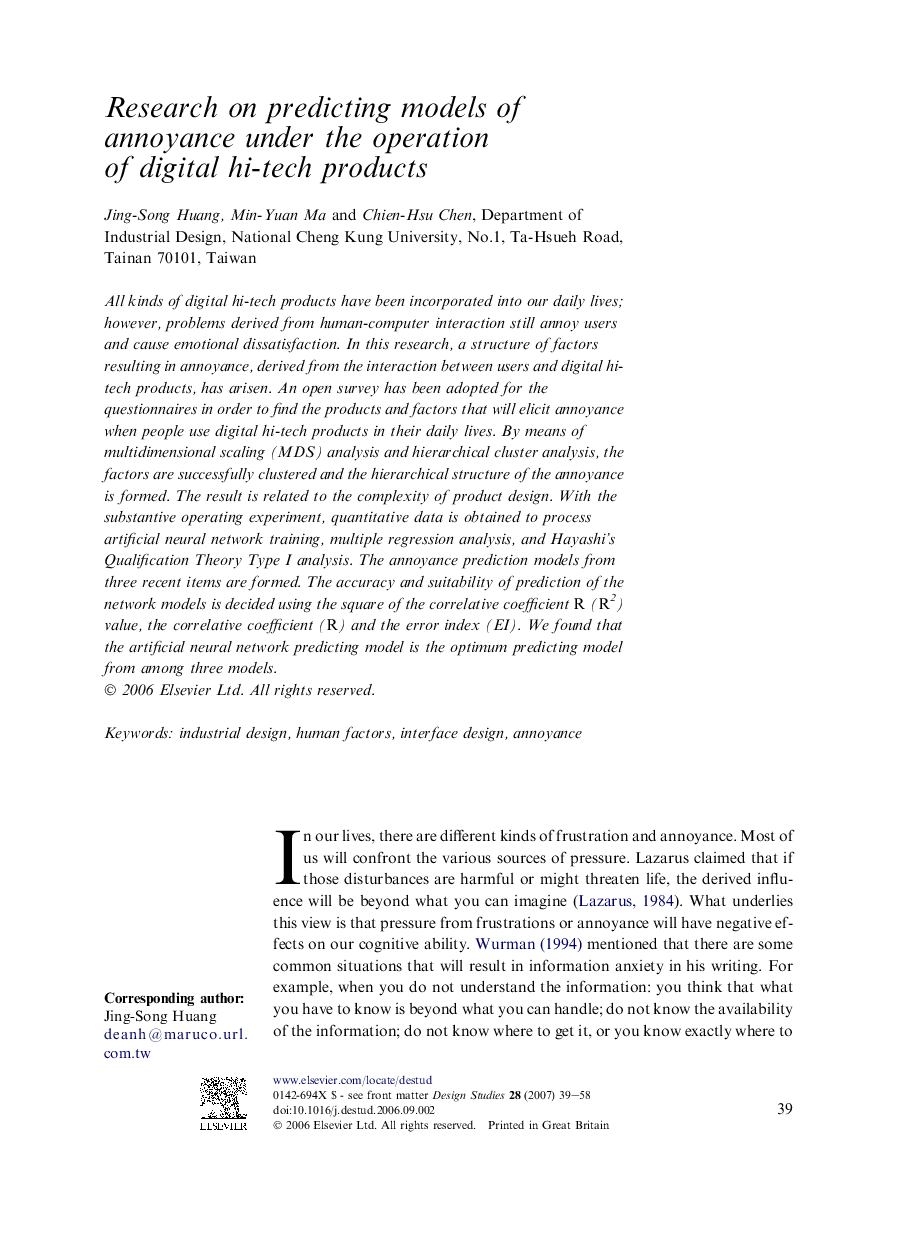| Article ID | Journal | Published Year | Pages | File Type |
|---|---|---|---|---|
| 261744 | Design Studies | 2007 | 20 Pages |
All kinds of digital hi-tech products have been incorporated into our daily lives; however, problems derived from human-computer interaction still annoy users and cause emotional dissatisfaction. In this research, a structure of factors resulting in annoyance, derived from the interaction between users and digital hi-tech products, has arisen. An open survey has been adopted for the questionnaires in order to find the products and factors that will elicit annoyance when people use digital hi-tech products in their daily lives. By means of multidimensional scaling (MDS) analysis and hierarchical cluster analysis, the factors are successfully clustered and the hierarchical structure of the annoyance is formed. The result is related to the complexity of product design. With the substantive operating experiment, quantitative data is obtained to process artificial neural network training, multiple regression analysis, and Hayashi's Qualification Theory Type I analysis. The annoyance prediction models from three recent items are formed. The accuracy and suitability of prediction of the network models is decided using the square of the correlative coefficient R (R2) value, the correlative coefficient (R) and the error index (EI). We found that the artificial neural network predicting model is the optimum predicting model from among three models.
